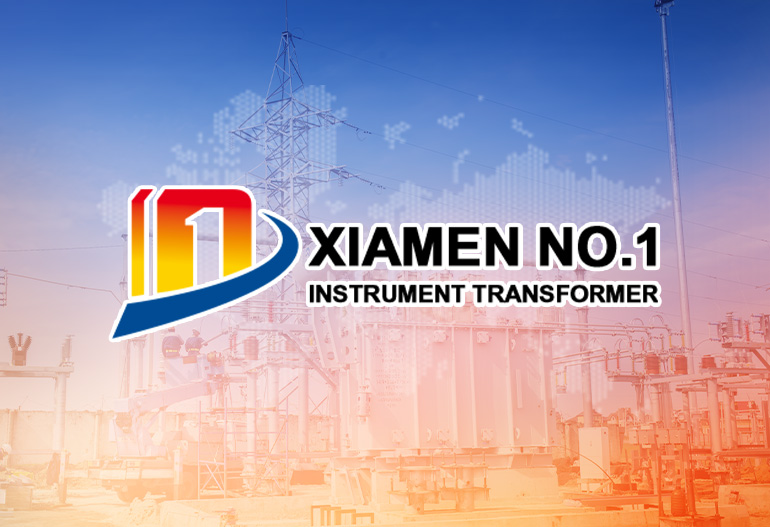
News
The Basics of Current Transformers: Working Principles Unveiled
What is a Current Transformer?
Core Components of a Current Transformer
Primary Winding: Usually a single turn or a few turns of thick conductor, designed to carry the high primary current (e.g., hundreds or thousands of amps). In some cases, the primary winding is the actual high-current conductor passing through the CT’s core (called a "window-type" CT).
Secondary Winding: Comprises many turns of thin insulated wire. It delivers the stepped-down current (5A or 1A) to connected devices like ammeters, relays, or energy meters.
Magnetic Core: Made of high-permeability materials (e.g., silicon steel, ferrite) to minimize magnetic losses and ensure efficient flux transfer between windings.
Working Principle: Electromagnetic Induction
- Primary Current Flow: The high current (I₁) from the power system flows through the primary winding, creating an alternating magnetic flux (Φ) in the core.
- Flux Linkage: This alternating flux links with both the primary and secondary windings. According to Faraday’s Law, a voltage is induced in each winding proportional to the rate of change of flux and the number of turns.
- Secondary Current Generation: The induced voltage in the secondary winding drives a current (I₂) through the connected devices (e.g., ammeters). The secondary current is much smaller than the primary current due to the higher number of secondary turns.
- Turns Ratio Relationship: For an ideal CT (no losses), the ratio of primary to secondary current is inversely proportional to the ratio of secondary to primary turns:
I₁ / I₂ = N₂ / N₁
where N₁ = number of primary turns, N₂ = number of secondary turns.
For example, a CT with a 1000:5 ratio means 1000A in the primary induces 5A in the secondary (N₂/N₁ = 1000/5 = 200).
Key Characteristics and Considerations
- Burden: The total impedance (resistance + reactance) of the secondary circuit (including wires, meters, relays) must be within the CT’s rated burden to ensure accuracy. Exceeding the burden causes saturation and measurement errors.
- Saturation: If the primary current is excessively high (e.g., during a fault), the core may saturate, meaning it can no longer carry more flux. This breaks the turns ratio relationship, leading to inaccurate secondary currents. Special "protection CTs" are designed to avoid saturation during faults.
- Isolation: CTs provide electrical isolation between the high-voltage primary circuit and the low-voltage secondary circuit, protecting operators and equipment from high voltages.
- Polarity: Correct polarity (phase alignment) between primary and secondary currents is critical for protective relays to operate correctly. Polarity is marked with dots on the windings (current enters the dotted end of one winding and exits the dotted end of the other).
- Never Open-Circuit the Secondary: The secondary winding must never be open-circuited when the primary is energized. Without a load, the induced secondary voltage becomes extremely high (due to N₂ >> N₁), posing a shock hazard and damaging the CT. Secondary circuits are often fused or shorted when not in use.
Types of Current Transformers
Measurement CTs: Used for accurate current measurement in meters (e.g., energy meters, ammeters). They prioritize precision within a normal current range.
Protection CTs: Designed to operate correctly during faults (high currents) to trigger protective relays. They focus on linearity even at high currents.
Window-Type CTs: Have a hollow core; the primary conductor passes through the "window" (no dedicated primary winding), making them easy to install around existing conductors.
Wound-Type CTs: Have both primary and secondary windings physically wound around the core, used for lower primary currents.
Applications
Current Measurement: In ammeters, energy meters, and power quality analyzers to monitor system currents.
Protection Systems: Triggering circuit breakers or relays during overcurrents, short circuits, or earth faults.
Control Systems: Providing feedback for load management and automation in industrial processes.
Summary

XUJIA
I graduated from the University of Electronic Science and Technology, majoring in electric power engineering, proficient in high-voltage and low-voltage power transmission and transformation, smart grid and new energy grid-connected technology applications. With twenty years of experience in the electric power industry, I have rich experience in electric power design and construction inspection, and welcome technical discussions.

